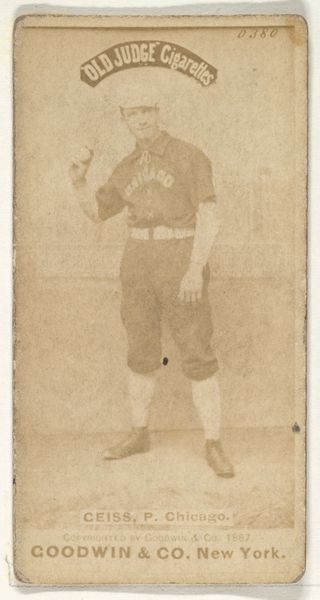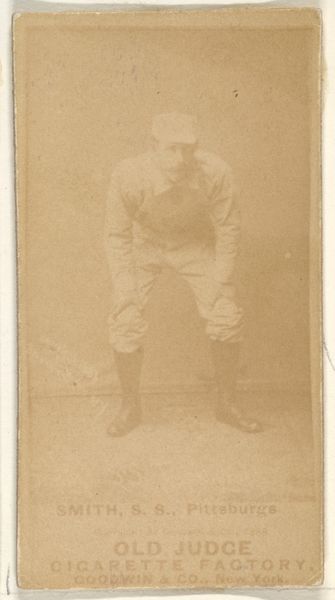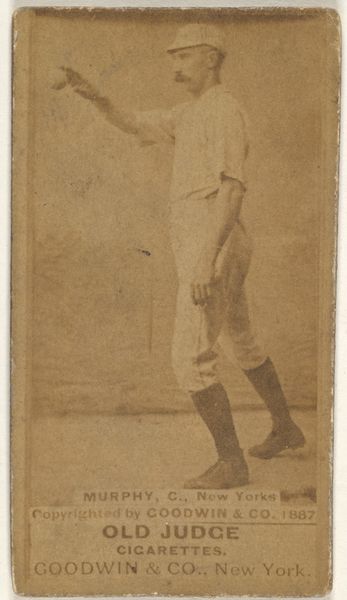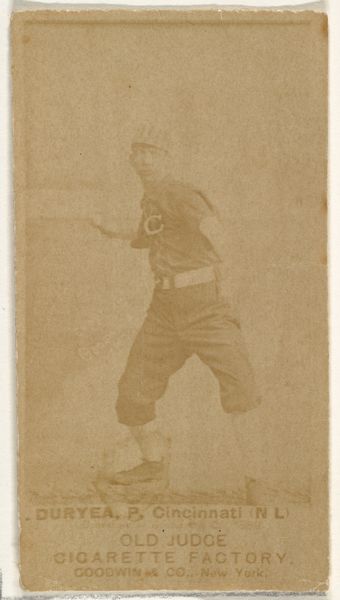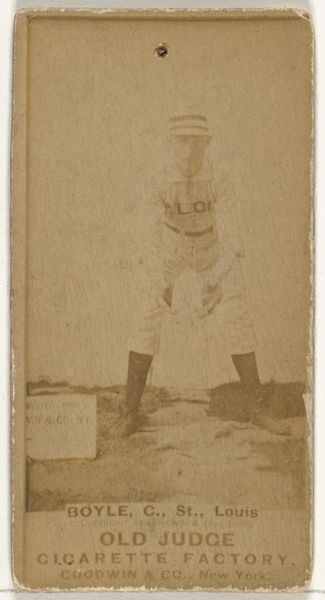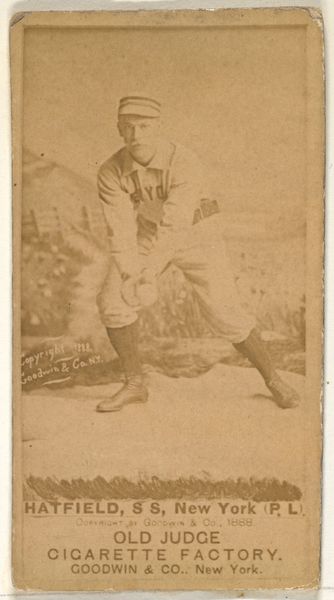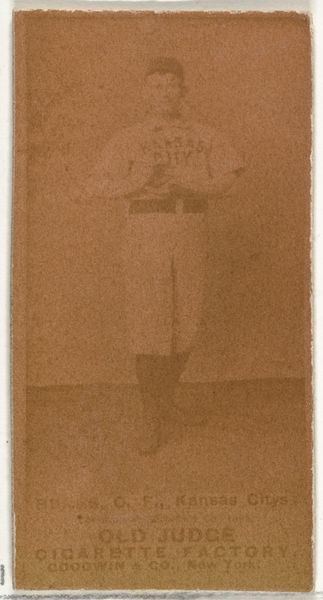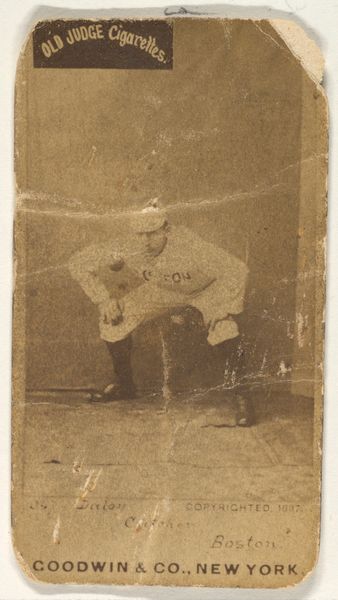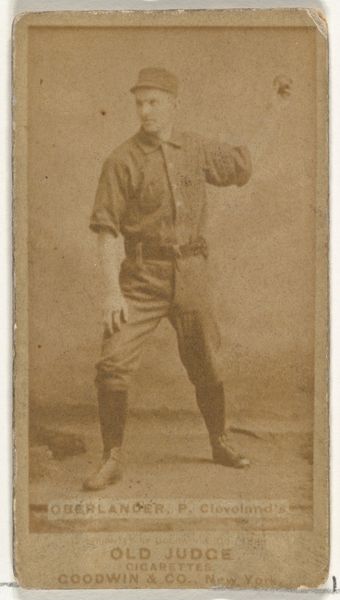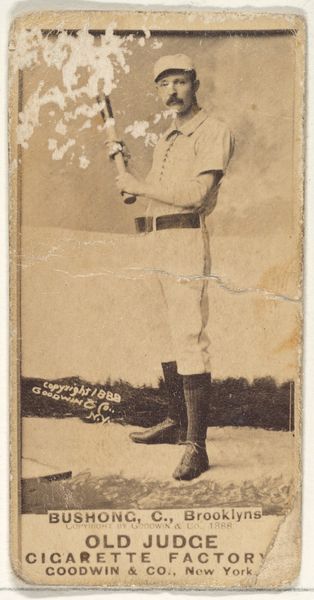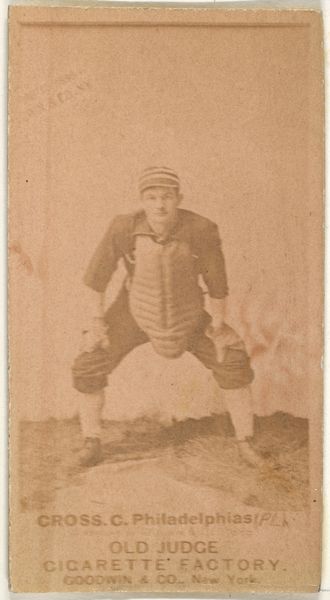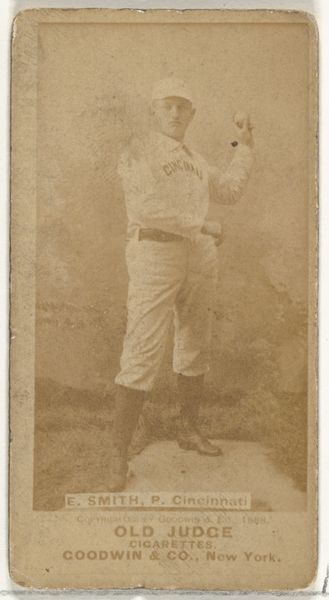
Albert Herman "Schelley" Schellhase, Catcher, St. Joseph Clay Eaters, from the Old Judge series (N172) for Old Judge Cigarettes 1889
0:00
0:00
drawing, print, photography
#
portrait
#
drawing
# print
#
baseball
#
photography
#
men
#
genre-painting
#
athlete
Dimensions: sheet: 2 11/16 x 1 3/8 in. (6.9 x 3.5 cm)
Copyright: Public Domain
Curator: Let's discuss this intriguing artifact: "Albert Herman 'Schelley' Schellhase, Catcher, St. Joseph Clay Eaters," a trade card produced circa 1889 by Goodwin & Company for Old Judge Cigarettes. Editor: It’s so faded and fragile. I’m immediately drawn to the sepia tones; they give it a wonderful antique quality, almost dreamlike. You can barely make out his features. Curator: That very quality, the photograph's almost ethereal nature, tells us a lot. It reveals the limitations of photographic reproduction at the time and how it was leveraged by burgeoning consumer culture. The blur enhances a romantic vision of athleticism. Editor: Absolutely, but let’s think about that photographic process itself. Those chemicals, the paper, the printing press—all required a complex network of production and labor. This little card is the end result of all that industrial activity. Curator: Indeed. And note the capitalization. Everything from "Old Judge Cigarette Factory" to the player's name itself, screams its capitalist function to brand itself during baseball’s explosion as America's pastime. These weren't collected for art's sake. Editor: No, these were incentives to buy, but what is so wonderful is that this ephemeral product, meant to be tossed away with a cigarette pack, became a lasting document about work and sports, and baseball cards as industrial ephemera have exploded in value. Curator: I'm fascinated by how images like these shaped public perceptions of athletes and constructed the very idea of American heroism, with mass reproductions offering accessibility across social lines. Editor: Agreed. These are great examples of how something mass-produced and commonplace ends up embodying rich history and surprising aesthetic impact when time has worked its transformative magic on them. It now shows an intriguing picture into labor, sports, and a particular manufacturing chain. Curator: It highlights how what’s deemed valuable is so tightly controlled by both our present and what history chooses to illuminate in retrospect.
Comments
No comments
Be the first to comment and join the conversation on the ultimate creative platform.
